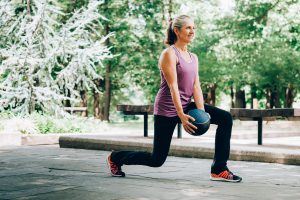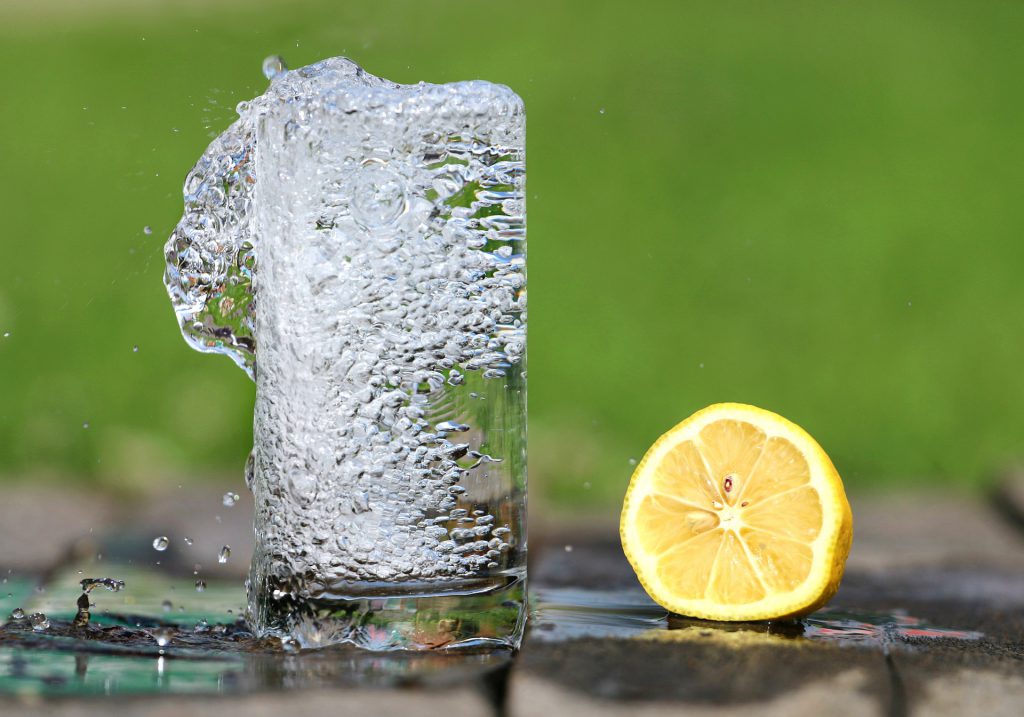My client asked me the other day:
“I am running on the treadmill and sweating a little. I am not a runner, but I am pushing pretty hard for my fitness level. I don’t drink much water because I don’t feel thirsty. But then, about 20 minutes after my workout, I start sweating like crazy! This can’t be a hot flash, right? So what’s going on?”
The science behind sweating after exercise in Menopause
As we go through Menopause, our hormone levels fluctuate. As a result, the body stops producing as much estrogen, testosterone, and progesterone, all of which can trigger night sweats. Without estrogen, the autonomic nervous system (ANS), which is responsible for pumping hormones, is going haywire. This increases blood pressure, heart rate, sweat production, and body temperature. As a result, menopausal women experience hot flashes and night sweats. So, what is the science behind sweating after exercise in Menopause?
But why do I sweat 20 minutes after my workout?
This hormonal roller coaster makes it hard for active women to exercise in the heat. We are quicker to heat up due to the hormone changes and less able to cool down.
The biological safeguards that protect us from overheating are slow to kick in, and our core temperature is not as regulated as when we were younger.
A recent study compared sweat rate, sweat volume, sodium content, and thirst level among three groups of women. Their subjects ranged from premenopausal to postmenopausal women. The research found that the core temperature of postmenopausal women was higher than during Menopause. This resulted in less sweat production and a lack of thirst.
As for my client, she retains body heat and does not hydrate enough. As a result, her body overheated and could not cool down until her heart rate dropped.
How can you prepare yourself for your next workout?
– Precool before your workout: drink cold, low-sugar electrolyte drinks
– Add a pinch of salt to your water (water alone does not hydrate)
– Hydrate all day and always have your water bottle with you
– Eat watery fruits and vegetables (watermelon, peaches, strawberries, cauliflowers, peppers, spinach)
– Exercise outside, layer your clothing, and stay in the shade
5 Strategies That Help Manage Menopause Symptoms
Excessive sweating, particularly hot flashes, and night sweats are common symptoms during Menopause. Here are some strategies to help manage this symptom:
- Stay Cool: Keep your environment cool, especially your bedroom. Use fans and wear light, breathable clothing, preferably made from natural fibers like cotton.
- Dietary Changes: Avoid potential triggers such as spicy food, caffeine, and alcohol, as these can all exacerbate hot flashes and sweating. Hydrate well to replace lost fluids.
- Exercise Regularly: Regular physical activity can help regulate your body temperature and reduce hot flashes. It also aids in managing stress, another trigger for hot flashes.
- Mind-Body Techniques: Practices like deep breathing, yoga, meditation, and other stress-reducing techniques can help manage hot flashes.
- Hormone Replacement Therapy (HRT): For some women, HRT can effectively reduce menopausal symptoms, including hot flashes. Consult your healthcare provider to discuss whether HRT is a suitable option for you.
Remember, every woman’s experience with Menopause is unique. Therefore, finding the best strategies for you may take trial and error.
4 Types Of Workouts To Prioritize During Menopause
The best workouts during Menopause are those that can help manage menopause symptoms, maintain healthy body weight, enhance mood, and prevent diseases such as osteoporosis and heart disease. Here are some types of workouts that are beneficial:
- Strength Training: Lifting weights or doing bodyweight exercises can help build muscle, increase metabolic rate, and improve bone density, which is particularly important as the risk of osteoporosis increases during Menopause.
- Aerobic Exercises: Regular cardio workouts such as walking, running, cycling, or swimming can help maintain a healthy weight, boost mood, and promote heart health.
- Flexibility and Balance Exercises: Activities like yoga, Pilates, and tai chi can increase flexibility, improve balance, reduce stress, and promote a sense of well-being.
- Mind-Body Exercises: Practices like yoga, Pilates, and tai chi can reduce stress and help manage menopausal symptoms like hot flashes and mood swings.
Join me in the battle of staying cool and still feeling strong and confident.



Pingback: Interview with Triathlon and Running Coach Taneen Carvell
Pingback: Why Pilates Rocks your Body and Delivers Results
Comments are closed.